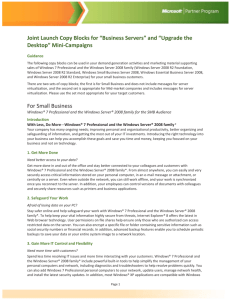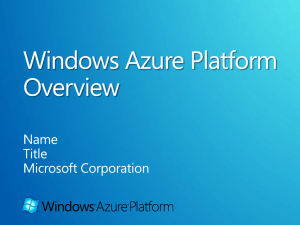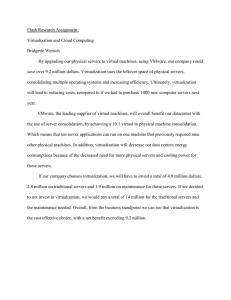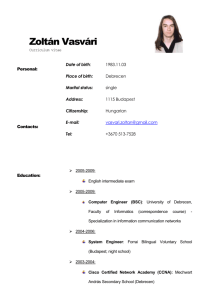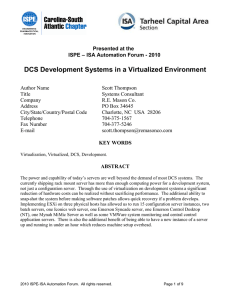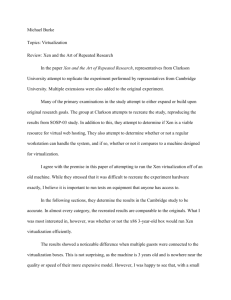Virtualization
advertisement
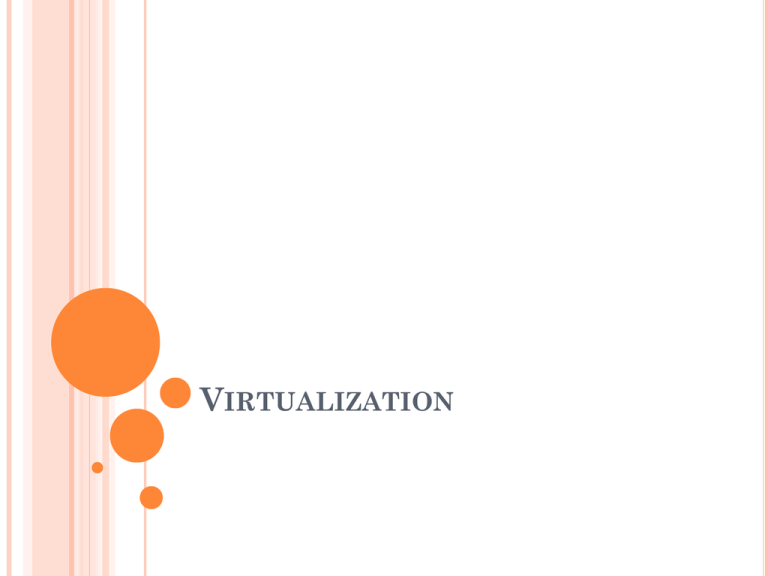
VIRTUALIZATION VIRTUALIZATION IS EVERYWHERE Developers use it to test software on different operating systems IT professionals use it to test different configurations Businesses use it to run entire IT infrastructure Universities use it in labs Soon your phone may be virtualized 3 major vendors: VMware, Microsoft, and Citrix VMWARE STATISTICS 100% of Fortune 100 Companies 10% of Fortune Global 100 Companies 96% of Fortune 1000 Companies 95% of Fortune 500 Companies 140,000+ VMware Customers 89% of all virtualized applications in the world run on VMware VIRTUALIZATION REVIEW • Resources are dynamic • Takes advantage of multiple processors and cores ADDITIONAL BENEFITS Add additional resources on the fly or move to more powerful server Easily setup a new server From weeks to minutes Easier to manage Improved driver situation 70% of Microsoft Window crashes caused by 3rd party drivers Over commit resources such as memory CPU and hard drive space VIRTUALIZATION EVOLUTION Originally virtualization was slow Initially used for testing and running other operating systems Hardware support eventually made virtualization fast Business need for production version of virtualization drove improvements Baremetal hypervisor made virtualization “production ready” BUSINESS ADOPTION THE VIRTUALIZATION SELLING POINTS Buy less servers Use less power Manage less physical servers Deploy servers faster Improve uptime Reduce recovery times IT MINDSET Number one goal is uptime Support is King! Insurance Policy Want to be able to hold someone accountable Best (perceived) practice and products rule “No one ever got fired for buying Cisco gear” Change is scary Many IT products promise to reduce cost, reduce work loads, improve performance, and make your coffee…though many fail to actually deliver VIRTUALIZATION ADOPTION Issues that pushed virtualization adoption Server sprawl Power crisis Cost cutting Features that pushed virtualization adoption Improve system management Faster system deployment Green initiative Dynamic resource allocation Improve system uptime and reduce recovery times WHAT IS A SERVER PC with “enterprise” grade parts and support Dell PowerEdge R710 $11,229 List Price 2 Quad core 2.4Ghz CPUs 64GB of RAM 2 870Watt power supplies A total of 6 network ports 6 450GB HDs in a Raid 5 4HR 7x24 Onsite Support (~$2,000) SERVER SPRAWL Companies have relied more and more on technology New projects mean new servers Cost of servers usually not an issue Many applications require isolation (separate servers) Application vendor doesn’t want to test their application running alongside application X Security concerns Different System Administrators Most servers have excessive capacity because of all this POWER CRISIS Every server requires power and generates heat To counteract the heat, cooling is required which also requires power As servers get faster they require more power and generate more heat 90’s 200W power supplies -> 00’s 600W power supplies Servers are smaller, 4U -> 1U and blades We can fit more servers in a datacenter POWER CRISIS CONTINUED Datacenters usually require redundant power lines (backhoe and sub-station protection) Datacenters usually require backup generators To handle additional capacity: Get additional cooling units Expand battery backups Get additional generators Bring in redundant power lines from separate power sub stations ADVANCE TOPICS


